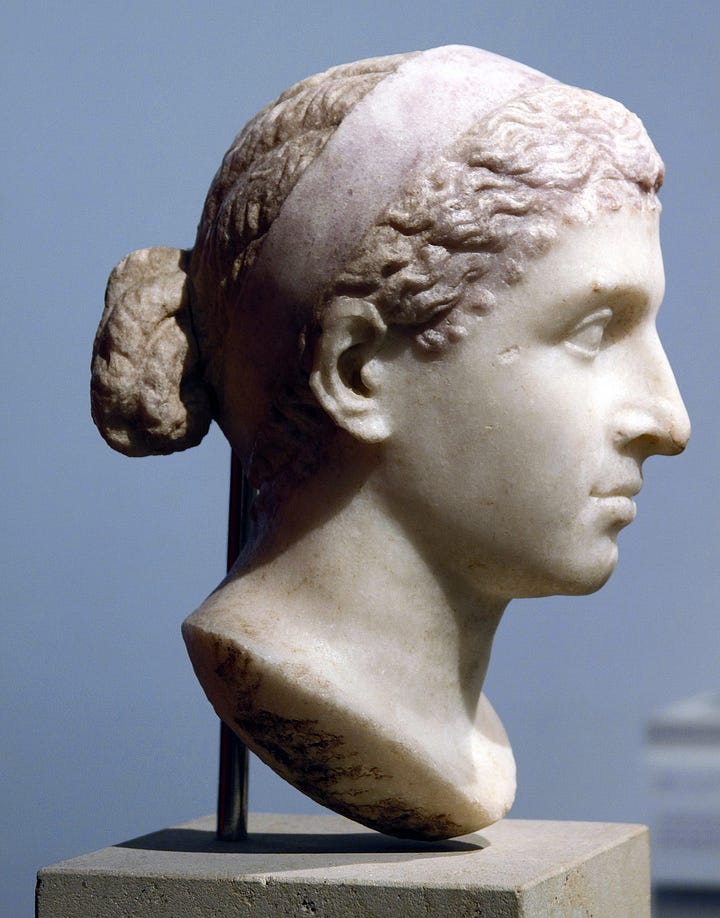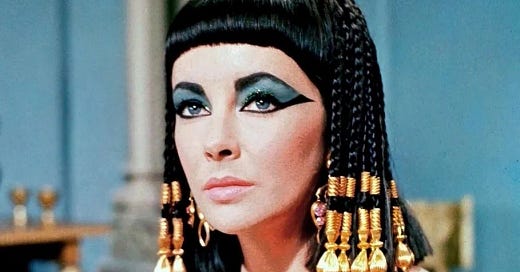The Netflix series African Queens came out in February of 2023. It was controversial for depicting the Egyptian Queen Cleopatra as an African black woman. The actress who played the titular monarch was of mixed Jamaican and English heritage.
The casting choice was challenged by some people, including very well-educated Egyptologists. Zahi Hawass, Egypt’s former Minister of State for Antiquities Affairs, publicly criticized the casting choice. Egypt even filed a lawsuit, claiming the documentary was distorting reality to promote Afrocentrism, and that Netflix’s show was not in line with Egyptian values. Jada Pickett Smith’s docudrama attempted to bolster its academic credibility by interviewing Professor Shelley P. Haley, a classicist and postdoctorate black feminist, for its second season.
What did Cleopatra really look like? Was she black? Does the historical record give us any clear answers?
Cleopatra’s appearance
We don’t have Cleopatra’s body to examine. We don’t know where she was buried. But we do have surviving depictions of Cleopatra in art.
The Berlin Cleopatra is a realistic marble portrait of the Egyptian Queen. It dates to Cleopatra’s own lifetime. When compared to Hellenistic frescoes from Pompeii and Herculaneum, the image of Cleopatra becomes a little more lucid. She probably wore a diadem, being that she was a Greek ruler. She had a melon hairstyle, and a large protruding nose. Coinage also depicts Cleopatra this way. If we assume the Hellenistic frescoes actually depict Cleopatra, this means she probably had pale white skin.


Cleopatra was probably not black, because she was not indigenous to Egypt at all; she was Greek. Her dynasty, the Ptolemies, was founded by a general of Alexander the Great, a man named Ptolemy. In the surviving depictions of Cleopatra, she is always shown in Greek fashion. Her hair and clothes all scream Greek.
African queen?
Why would anyone think that she was of North African descent? In 2009, a BBC documentary suggested that she might have North African blood, based on the study of a headless skeleton of a female child in a tomb in Ephesus. The child might have belonged to Arsinoe IV, a half-sister of Cleopatra. If Cleopatra’s sister was North African, her father might have married a black Egyptian woman, thus making Cleopatra half and half. But this is very speculative. There is no concrete evidence that Cleopatra’s father married a native Egyptian woman. Even worse, the age of the skeletal kid did not match Cleopatra’s sister. These findings were criticized by esteemed classicist Mary Beard.
More typical of the Ptolemies was the practice of incest. Cleopatra’s first consort was her blood-brother. Given this information, it makes a lot more sense to just assume that Cleopatra was 100% Greek. There might have been some Iranian blood, due to intermarriage with the Seleucid Kingdom. That theory would be more plausible than the idea that Cleopatra’s mother was black.
The Netflix show presents Cleopatra as an empowered black woman who resists the aggression of the colonial European powers. But the real Cleopatra was herself a Greek colonizer of the Egyptians. While she did speak Egyptian, she was the very first Ptolemaic ruler to even bother learning the native language. If anything, the Roman annexation of Egypt was a clash of civilizations between Romanized and Hellenistic cultures—not between Europeans and black Africans.
Conclusion
Cleopatra was almost certainly not black. This contradicts the bulk of evidence, including artistic depictions in sculpture, frescoes, and coinage. She was an ethnic Greek. Claims about her possible North African descent are purely speculative.
The Egyptian Queen’s life is being contorted to accommodate the activist agenda of pan-Africanism, which has inaccurately remolded the pharaohess’ legacy in its own image. This deliberate deconstruction of the Classical tradition is more idiotic than it is iconoclastic, and should not be mistaken for serious scholarship.
Learn More





